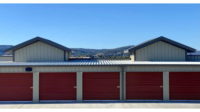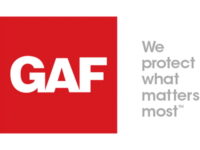Case Study
California Contractor Successful with Sustainability Thanks to Solaris
Solar technology gives Los Gatos Roofing the means to meet homeowner demands for sustainability

California has long been a leader in sustainability initiatives, setting ambitious targets for everything from reducing greenhouse gas emissions to recycling. This has had and continues to have significant implications for the construction sector.
The state’s Title 24 Building Standards, for example, are some of the most stringent in the nation. They emphasize energy efficiency, water conservation, and using renewable energy sources in the built environment. This means that everyone from planners and developers to architects and general contractors must adapt their work and material choices to ensure responsible building practices that meet state guidelines and reduce their environmental impact.

In Northern California, sustainability in residential building initiatives is a rapidly evolving field, reflecting the state’s commitment to environmental stewardship and innovation. Both ecological necessity and a cultural inclination towards environmental awareness drive the focus.
Still, when faced with home improvement choices like roof replacement, California residents, like homeowners across the country, tend to factor sustainability in alongside other primary drivers: curb appeal and utility cost savings.
One recent survey showed that home buyers—and especially younger home buyers—value a home’s exterior appearance above all else. In another study, 78% of home buyers expressed concern about their home’s environmental impact, but only 15% were willing to pay more for a home described as environmentally friendly. If the home offers utility cost savings, 57% of respondents said they would pay $5,000 or more above the price of the home.

On average, a roof accounts for about 40% of a home’s exterior, so it greatly impacts the aesthetics. With roofing products like the CertainTeed residential shingles featuring Solaris Cool Roof Technology, homeowners don’t have to sacrifice aesthetics for sustainability. Solaris shingles give homeowners a viable option to enhance the look of their home with an attractive roof while upgrading its sustainable performance.

Cool and Sustainable
Northern California’s San Francisco Bay area is rich with beautiful residential architecture. Modern single-family tract housing dominates the hills and valleys of the area, along with more classic Victorian, Edwardian, and Craftsman homes. The roofs of these homes reflect the mountainous terrain surrounding many of them: steep slopes of dark gray, black, and brown asphalt shingles.
Thanks to their long-lasting durability, economical cost, and wide range of color and design options, asphalt shingles remain the top roofing material choice for homeowners in the United States. Roughly 80% of American single-family homes — four out of every five —feature an asphalt roof. That statistic is well represented in the suburbs of San Jose, where Los Gatos Roofing, a residential roofing contractor, has been servicing the Bay Area since founder Gary Radonich started the business in 2001.
Gary and his son, Cameron, also a co-owner, operate the company, which averages 750 residential installations annually. Los Gatos Roofing is consistently listed on Roofing Contractor’s Top 100 Roofers in the U.S., and reviews on Google, Angi, and Yelp are overwhelmingly positive. Customers praise the company for its quality workmanship and customer service.
Los Gatos Roofing’s work focuses solely on residential steep-slope roofing, and Cameron has seen how the market has grown and transformed, with multiple factors impacting customers’ decision-making.
“Price is sometimes a factor in our customers’ roofing choice,” explains Cameron. “But very rarely is it the sole factor. It’s more about the style of shingles they want. A tract house in our area, for example, might typically cost about $2 million, so the difference between a $26,000 roof and a $28,000 is negligible compared to the price of the home.”

Among Los Gatos Roofing’s customer base, CertainTeed shingles with Solaris Cool Roof Technology seem to strike the right balance of design and color options, price point, and energy-efficient performance.
“On a typical week, we install 18 to 20 roofs, and 12 of them are Solaris,” says Cameron.
CertainTeed asphalt shingle products, such as Landmark Solaris, Landmark PRO Solaris, and Presidential Solaris shingles, are designed specifically to provide energy efficiency and superior protection against the elements.
Solaris shingles feature a special granule surface blend that can reflect high levels of solar heat. This reduces roof temperatures and heat transfer into living spaces, lessening the workloads of air conditioning systems and saving on energy costs.
Solaris Cool Roof products comply with California Title 24, Part 6, Cool Roof requirements (per the California Cool Roof Rating Council) and meet the more stringent Title 31 requirements for Los Angeles County. The large Solaris product portfolio features dozens of color options to suit any home’s aesthetic. All colors in the portfolio meet Title 24, Part 6, and most color options also meet Title 31.
Solaris products may also contribute to LEED certification and other green building programs.
“Solaris is gaining traction with our customers because the base price difference over other shingles is so low that they choose it for the hope that it does something good for the environment,” says Cameron.

Beyond Cool Roof Technology
Solaris's performance is only one component of CertainTeed's strategy of building sustainability into its shingle products. What happens before and after the installation of CertainTeed asphalt shingles is just as important as what happens during their lifecycle.
For starters, they’re manufactured in CertainTeed roofing facilities that actively reduce their environmental impact through reduced water usage, lower manufacturing waste, and wind-powered operations. CertainTeed manufacturing facilities source 35% of their electricity from wind, and 86% of CertainTeed shingle manufacturing waste is diverted from landfills and routed to new use.
Where shingles go at the end of their lifecycle is also a key consideration for sustainability. Approximately 13 million tons of asphalt shingles are landfilled every year. Fortunately, CertainTeed is building partnerships and investing in shingle recycling technologies to significantly reduce that amount by transforming end-of-life shingles into asphalt for roads.
These approaches significantly lessen energy use, reduce landfill waste, and demand fewer new raw materials.
Supporting Contractors and Their Customers
The partnership between CertainTeed and Los Gatos Roofing highlights the importance of manufacturers and contractors working together to provide sustainable, high-quality solutions that meet consumers' evolving demands.
“Our customers have confidence that CertainTeed will support us with warranty or any product issues,” says Cameron. “In the past couple of years, there have been supply chain problems across the industry in getting shingle products, but CertainTeed has been able to basically guarantee that we’ll have products to install. That gives us and our customers confidence.”
It’s a collaboration that not only satisfies the varied needs of homeowners but also contributes to the broader environmental goals of the state of California. The drive towards sustainability in residential building is a multi-faceted endeavor, and both manufacturers and contractors are key players.
Looking for a reprint of this article?
From high-res PDFs to custom plaques, order your copy today!





